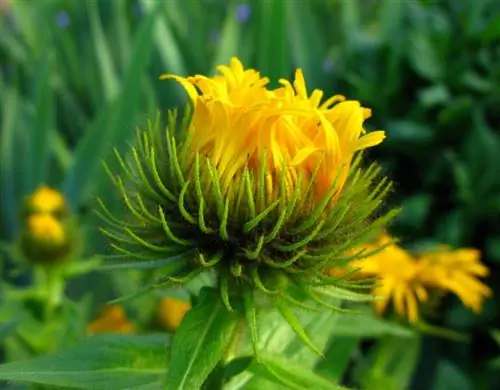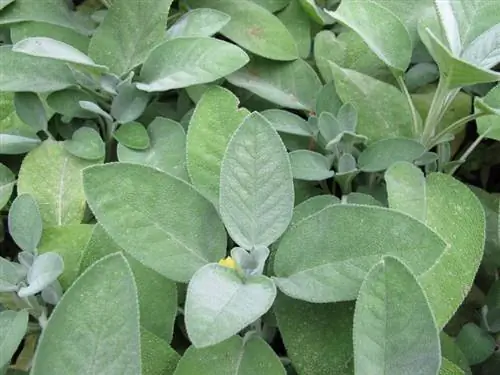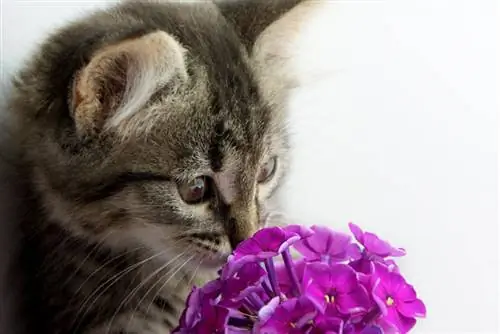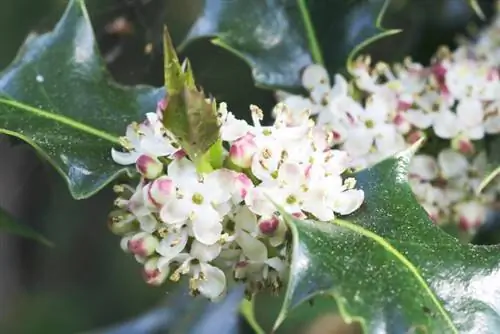- Author admin [email protected].
- Public 2023-12-16 16:46.
- Last modified 2025-01-23 11:20.
Coming from Central Asia and native to Central and Southern Europe, elecampane is one of the well-known medicinal plants. The hardy perennial produces beautiful yellow flowers from July to September.
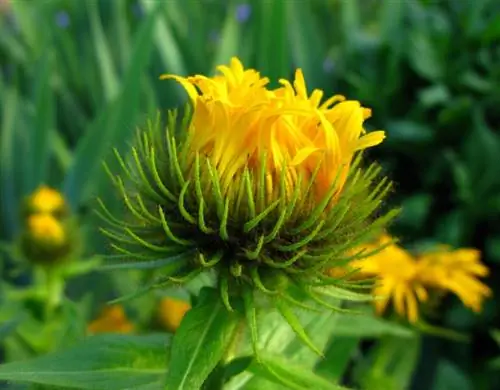
What healing effects does the elecampane medicinal plant have?
Elecampane is a medicinal plant that is used for loss of appetite, bronchial catarrh, indigestion and eczema. It has antibacterial, antifungal, digestive, urinary and bilious effects, cough suppressant and antispasmodic.
What healing properties does elecampane have?
Elecampane contains essential oils, bitter substances and inulin. These substances are effective against loss of appetite as well as to loosen mucus in bronchial catarrhs. However, allergy sufferers should be very careful, because allergies to elecampane are quite common and the bitter substances of this plant are often used in herbal liqueurs. They are said to stimulate digestion.
Elecampane has an antibacterial and antifungal effect (against fungi), stimulating digestion and metabolism, urinary and bilious, cough suppressant and antispasmodic. This plant was previously used against many complaints: loss of appetite, bronchitis, intestinal inflammation, bile problems and dry coughs, but also for eczema and poorly healing wounds and even against worms.
How to use Elecampane?
Due to its bitter taste and allergenic effects, elecampane is now rarely used for medicinal purposes. However, it is part of the lemon balm spirit and many herbal bitters or liqueurs. You can also make a tea from the root and leaves. For example, it helps with mild digestive problems. The trade offers some ready-made preparations with elecampane.
Can you grow elecampane yourself?
Elecampane is not only medicinal but also decorative. The flowers are somewhat reminiscent of sunflowers. With a growth height of up to two meters, these perennials are an ornament for cottage gardens and natural gardens. The scent, reminiscent of violets, is ideal for potpourris. The leaves can be harvested if necessary, the roots, which weigh several kilos, can only be harvested from the autumn of the second year.
Elecampane likes moist, humus-rich soil with more or less sun. But it doesn't have to be in the midday sun. Add plenty of organic fertilizer to the planting hole so that the lushly growing roots have enough nutrients to get started. Water your elecampane regularly and not too little. Elecampane can be propagated by sowing or dividing.
Tip
During your pregnancy you should only use Elecampane after consulting your doctor. Herbal preparations also have side effects.

